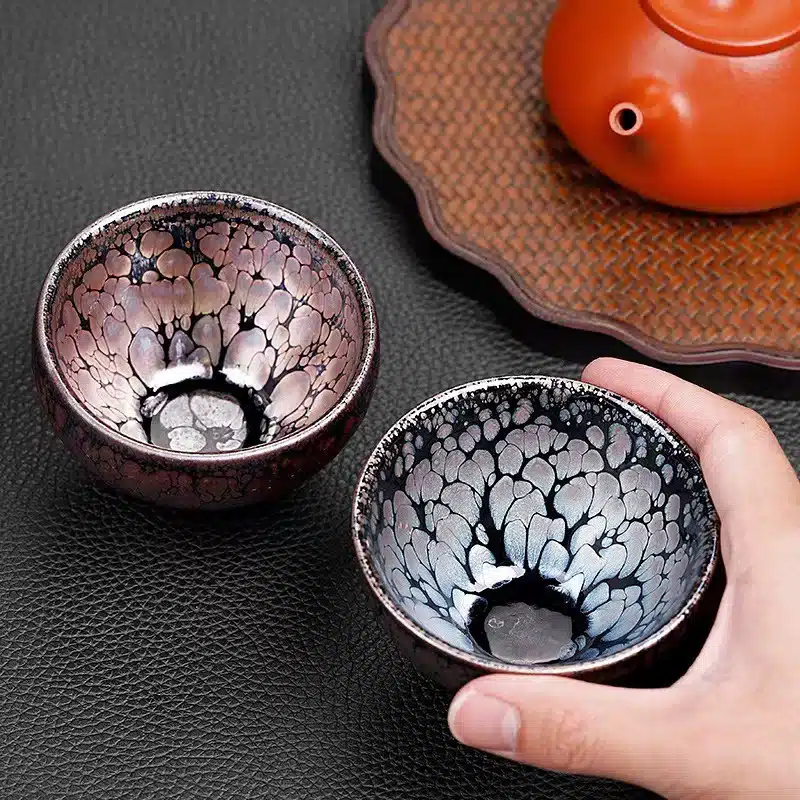Jian Zhan, a renowned Chinese tea bowl with a rich history, is also known as Tenmoku in Japan. This article explores the origins of this name and the cultural significance of these exquisite tea vessels.
Contents
The Origins of Jian Zhan
Jian Zhan originated in Jianyang District, Nanping City, Fujian Province, during the late Tang Dynasty and Five Dynasties period.
These tea bowls reached their peak of popularity during the Song Dynasty (960-1279) and were considered one of the eight famous porcelains of that era.
The Rise to Prominence
Jian Zhan became highly prized for its unique characteristics:
- Suitable for tea preparation
- Exclusively used by the Royal Court
- Praised by literary giants and emperors
The popularity of Jian Zhan led to its spread beyond China’s borders, particularly to Japan.
The Japanese Connection: Tenmoku
The term “Tenmoku” is the Japanese pronunciation of Tianmu, which refers to the Tianmu Mountain in China.
This mountain was home to a temple where iron-glazed bowls were used for tea ceremonies.
Why the Name Tenmoku?
- Monastic Origins: Japanese monks who traveled to Chinese monasteries brought these tea bowls back to Japan.
- Imperial Gift: In 1406, the Yongle Emperor of the Ming dynasty sent ten Jian ware bowls to the Japanese shogun Ashikaga Yoshimitsu.
- Tea Ceremony Adoption: As Jian Zhan became valued for Japanese tea ceremonies, more pieces were imported from China.
Characteristics of Jian Zhan/Tenmoku
Jian Zhan is known for its distinctive features:
- Conical shape with a slight indent below the rim
- Height of 4-5 inches (10-13 cm)
- Emphasis on ceramic glaze with various effects
- Glaze colors ranging from dark plum to yellow, brown, and black
The Artistic Value
The beauty of Jian Zhan lies in its glaze effects:
- “Hare’s fur” pattern
- “Oil-spot” effect
- “Partridge feather” design
These patterns are created randomly as excess iron in the glaze is forced out during firing.
Cultural Significance
In China
Jian Zhan was highly esteemed during the Song Dynasty, especially among Buddhist monks and tea enthusiasts.
The scholar Cai Xiang (1012-1067) praised its qualities in “The Record of Tea”.
In Japan
Jian Zhan, known as Tenmoku in Japan, became integral to the Japanese tea ceremony.
Some pieces are so highly valued that they are designated as National Treasures of Japan.
Conclusion
The story of Jian Zhan, or Tenmoku, is a testament to the enduring appeal of this unique ceramic art form. Its journey from China to Japan and its recent revival demonstrate the cultural significance and artistic value that continue to captivate tea enthusiasts and art collectors alike.







